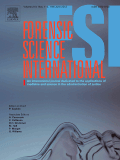
Forensic Science International
Scope & Guideline
Bridging Disciplines for Enhanced Forensic Practice
Introduction
Aims and Scopes
- Forensic DNA Analysis:
The journal extensively covers advancements in DNA analysis techniques, including multiplex PCR, next-generation sequencing, and methods for extracting DNA from challenging samples, such as degraded materials. - Toxicology and Substance Analysis:
Research related to the detection and quantification of drugs and poisons in biological samples, including post-mortem toxicology, drug profiling, and the impact of new psychoactive substances. - Digital Forensics and Cybersecurity:
The integration of digital evidence in forensic investigations, including the analysis of digital footprints and the use of machine learning in forensic applications. - Forensic Anthropology and Odontology:
Studies on skeletal remains, age estimation techniques, and dental analysis for identification purposes, highlighting methods for estimating age from dental features and bone structures. - Crime Scene Investigation Techniques:
Innovative methodologies for crime scene reconstruction, bloodstain pattern analysis, and the use of advanced imaging techniques to document and analyze evidence. - Environmental Forensics:
Research on the interaction between environmental factors and forensic evidence, including the analysis of soil, water, and microbial communities in the context of forensic investigations. - Forensic Biology and Entomology:
Exploration of biological indicators in forensic contexts, including the use of insects for estimating time of death and the analysis of biological materials for identification. - Legal and Ethical Aspects of Forensic Science:
Discussion on the ethical implications, legal standards, and best practices in forensic science, including the use of forensic evidence in court.
Trending and Emerging
- Machine Learning and Artificial Intelligence:
The integration of machine learning algorithms in forensic analysis is gaining traction, particularly for tasks such as facial recognition, voice comparison, and drug detection, providing more accurate and efficient results. - Microbial Forensics:
Emerging research on the use of microbial communities for forensic identification and environmental tracing is becoming increasingly significant, highlighting the role of microbiomes in establishing connections to crime scenes. - Advanced Imaging Techniques:
There is a growing emphasis on the use of advanced imaging technologies, such as 3D modeling and infrared imaging, to enhance the visualization and analysis of forensic evidence. - Forensic Genetics and Ancestry Analysis:
Research focusing on forensic genetics, particularly ancestry analysis using SNPs and microhaplotypes, is trending as forensic scientists seek to understand population genetics and its implications for identification. - Environmental and Ecological Forensics:
The intersection of forensic science with environmental science is emerging, with studies exploring the effects of environmental conditions on the preservation and analysis of forensic evidence. - Digital and Cyber Forensics:
The trend towards integrating digital forensic methodologies is accelerating, with a focus on analyzing digital evidence and understanding its implications in criminal investigations. - New Psychoactive Substances (NPS) Research:
As new psychoactive substances continue to emerge, there is a significant increase in research dedicated to their detection, analysis, and implications for public health and safety.
Declining or Waning
- Traditional Forensic Techniques:
There has been a noticeable decline in studies focusing on traditional methods such as hand-drawn sketches and basic fingerprint analysis, as the field moves towards more advanced, technology-driven approaches. - General Forensic Reports and Reviews:
The journal has shifted away from broad reviews of forensic practices to more specific, targeted research, leading to fewer articles that provide generalized overviews. - Conventional Toxicology:
Research on conventional toxicology practices has decreased as more attention is given to the analysis of new psychoactive substances and advanced analytical techniques. - Forensic Document Examination:
While still present, the frequency of studies specifically focused on traditional document examination techniques has decreased in favor of digital and electronic document analysis. - General Crime Scene Protocols:
There is a waning interest in generic crime scene protocols as the focus has shifted towards specialized techniques and technologies that enhance evidence collection and analysis.
Similar Journals
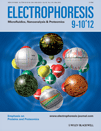
ELECTROPHORESIS
Advancing the Frontiers of Electrophoretic ScienceELECTROPHORESIS, published by Wiley, stands as a premier journal dedicated to advancing the field of analytical chemistry, biochemistry, and clinical biochemistry. With an ISSN of 0173-0835 and an E-ISSN of 1522-2683, this journal has been a vital resource since its inception in 1980 and is poised to continue its journey through to 2024. Operating out of Germany, it holds a significant standing in the academic community, featuring in the Q2 category for Analytical Chemistry and in the Q3 tier for both Biochemistry and Clinical Biochemistry as of 2023. The journal ranks impressively within Scopus, occupying the 43rd position out of 156 in Analytical Chemistry and the 44th spot out of 117 in Clinical Biochemistry, ensuring its relevance and impact in these disciplines. Although it does not currently offer open access, ELECTROPHORESIS remains an essential publication for researchers, professionals, and students seeking cutting-edge insights and developments that influence the methodologies and technologies underpinning electrophoretic techniques.

International Journal of Digital Crime and Forensics
Exploring Innovations in Cybercrime AnalysisWelcome to the International Journal of Digital Crime and Forensics, an esteemed publication spearheaded by IGI Global, dedicated to advancing research and disseminating knowledge in the crucial fields of cybersecurity, digital crime, and forensic analysis. With its inaugural issue published in 2009, this journal has continually focused on providing a platform for innovative research, insightful case studies, and practical solutions aimed at addressing contemporary challenges in digital criminal activity and forensic investigation. While currently classified in the Q4 Category for software within the Computer Science domain according to 2023 rankings, and positioned in the 32nd percentile of Scopus Ranks, the journal remains committed to enhancing its impact and visibility in the scholarly community. By maintaining a rigorous peer-review process, the journal ensures high-quality contributions that equip researchers, professionals, and students with essential tools and knowledge. Although the journal operates under a subscription model, it plays an integral role in shaping the discourse surrounding digital crime and forensics, making it an indispensable resource for anyone serious about understanding and combating digital threats.
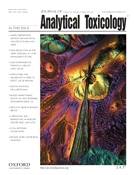
JOURNAL OF ANALYTICAL TOXICOLOGY
Pioneering Research for a Safer TomorrowJOURNAL OF ANALYTICAL TOXICOLOGY, published by Oxford University Press Inc, stands as a leading platform in the field of analytical chemistry and toxicology, focusing on the rigorous exploration of methodologies and advancements in the detection of toxic substances. Since its inception in 1977, this journal has continually contributed to the scientific community, providing researchers and professionals with vital insights into chemical health, safety, and environmental implications. With an impressive Q1 ranking in both Analytical Chemistry and Chemical Health and Safety, along with reputable Q2 rankings in Environmental Chemistry and Toxicology, the journal maintains its critical standing in vibrant academic communities, ensuring the dissemination of high-quality research. Although it currently does not offer open access, articles are made available via institutional subscriptions, allowing widespread access to its valuable findings. Located in the United States, the journal contains a wealth of knowledge poised to benefit scientists and scholars engaged in toxicological research, emphasizing its importance in enhancing public health and safety.
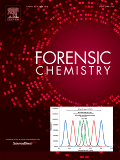
Forensic Chemistry
Bridging disciplines for impactful forensic research.Forensic Chemistry is a premier journal published by Elsevier, specializing in the interdisciplinary field of forensic science, with a strong emphasis on analytical and materials chemistry, pathology, and law. Established in 2016 and converging to a significant publication trajectory through 2024, the journal has rapidly ascended to an impressive Q1 ranking across multiple categories, demonstrating its impact and commitment to advancing forensic analysis and methodologies. With an impact factor reflecting its relevance—especially notable with a 95th percentile rank in Social Sciences and Law—Forensic Chemistry serves as an essential resource for researchers, legal authorities, and academics seeking to explore the latest developments in forensic techniques and applications. Its rigorous peer-review process and high-quality publications ensure that it remains at the forefront of scientific inquiry in forensic practices. Access to the journal is available without an open access model, further emphasizing its commitment to curated, high-impact scholarship that contributes to both theoretical foundations and practical applications in the forensic field.
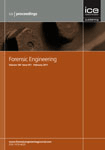
Proceedings of the Institution of Civil Engineers-Forensic Engineering
Illuminating Forensic Pathways in Civil EngineeringProceedings of the Institution of Civil Engineers - Forensic Engineering is a pivotal journal in the field of forensic engineering, published by Emerald Group Publishing Ltd, a renowned name in academic publishing. With a focus on investigating and understanding the failures of civil engineering structures, this journal provides a critical platform for the dissemination of research and case studies aimed at enhancing safety, risk, and reliability in engineering practices. It holds an important place in the Q4 quartile of the Safety, Risk, Reliability and Quality category as of 2023, and currently ranks #123 out of 207 in its field according to Scopus, reflecting its emerging influence despite its relatively recent establishment in 2011. Researchers, practitioners, and students alike will find valuable insights through non-open access articles that contribute to a deeper understanding of forensic analysis in civil engineering contexts. The journal's mission is to promote discussions that lead to significant advancements in civil engineering safety and reliability, ultimately informing best practices and policy-making in the profession.
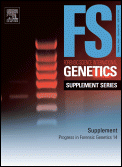
Forensic Science International Genetics Supplement Series
Unraveling mysteries with the science of genetics.Forensic Science International Genetics Supplement Series, published by Elsevier Ireland Ltd, is an essential resource for professionals, researchers, and students engaged in the increasingly critical intersection of genetics and forensic science. This peer-reviewed journal, with an ISSN of 1875-1768 and E-ISSN of 1875-175X, provides a platform for disseminating innovative research findings and methodologies that enhance the application of genetic techniques in forensic investigations. The journal has gained recognition within the academic community, evidenced by its notable rankings in Pathology and Forensic Medicine as well as Genetics, placing it in Q3 and Q4 quartiles respectively in 2023. Although it operates without an open access model, its targeted converged years—spanning from 2008 to 2022—exemplify a commitment to fostering ongoing advancements in forensic genetics. Despite its positioning, the journal remains a significant contributor to public discourse, with an emphasis on the role of genetics in legal contexts and the continual evolution of forensic methodologies.

JOURNAL OF FORENSIC SCIENCES
JOURNAL OF FORENSIC SCIENCES is a premier publication dedicated to advancing the field of forensic science through high-quality research and innovation. Published by Wiley, this journal has been a reliable source of cutting-edge findings since its inception in 1961, with a continued commitment to excellence expected through 2024. With an ISSN of 0022-1198 and an E-ISSN of 1556-4029, the journal covers critical aspects of forensic medicine, including genetics, pathology, and molecular biology. Notably, it holds a Q2 ranking in Pathology and Forensic Medicine, reflecting its high impact and relevance in the field. Researchers and professionals benefit from comprehensive access to groundbreaking studies and discussions that drive advancements in forensic methodologies and technologies. While not an open access journal, its impact factor and rigorous peer-review process ensure that every article contributes significantly to the body of forensic science knowledge. Whether you are a seasoned forensic expert or an aspiring student, the JOURNAL OF FORENSIC SCIENCES serves as an essential resource for cutting-edge research and discoveries.
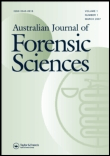
Australian Journal of Forensic Sciences
Connecting Researchers to the Heart of Forensic InnovationThe Australian Journal of Forensic Sciences, published by Taylor & Francis Ltd, stands as a pivotal resource in the field of forensic medicine and pathology. With an ISSN of 0045-0618 and an E-ISSN of 1834-562X, this esteemed journal has been at the forefront of forensic research since its inception in 1968. Currently classified in the Q2 category for the year 2023 within its domain, it ranks 92nd out of 208 journals, placing it within the 55th percentile in Scopus rankings. The journal's scope encompasses a diverse range of topics critical to the advancement of forensic sciences, making it an essential platform for researchers, professionals, and students seeking to stay abreast of the latest developments and methodologies in the field. Although not an open-access publication, the journal serves as a crucial conduit for disseminating high-quality research, contributing significantly to the ongoing evolution of forensic practice and knowledge.
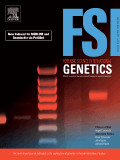
Forensic Science International-Genetics
Advancing Justice Through Genetic InsightForensic Science International-Genetics, published by Elsevier Ireland Ltd, stands as a pivotal resource in the realm of forensic science, particularly focusing on the intricate interplay of genetics within legal contexts. With an E-ISSN of 1878-0326, this esteemed journal serves to advance the understanding of genetic applications in forensic scenarios, enhancing methodologies and promoting innovations in evidence analysis. Recognized in the 2023 Q1 quartile rankings in both Genetics and Pathology and Forensic Medicine, it has established itself as a leading journal, positioned in the 87th percentile in the field of Pathology and Forensic Medicine. The journal spans valuable research from 2007 to 2025, making it a critical chronicle of evolving forensic practices. Researchers, professionals, and students alike will find an extensive compendium of peer-reviewed articles that not only address current challenges in forensic genetics but also foster collaboration and innovation across the scientific community. As a non-open access journal, it ensures high-quality content while offering insights essential for both academic study and practical application in forensic investigations.

Drug Testing and Analysis
Advancing the Science of Drug Efficacy and SafetyDrug Testing and Analysis is a leading scholarly journal published by WILEY, dedicated to advancing the field of drug testing and analytical methods. With ISSN 1942-7603 and E-ISSN 1942-7611, this journal provides a platform for the latest research in Analytical Chemistry, Pharmaceutical Science, and Environmental Chemistry, holding a prestigious reputation reflected in its Q1 and Q2 rankings across various categories in 2023. The journal promotes high-impact studies that explore innovative methodologies, with a specific focus on pharmacological and toxicological analyses, making it an essential resource for researchers, professionals, and students concerned with drug efficacy, safety, and environmental impact. With a strong commitment to quality and relevance, Drug Testing and Analysis remains at the forefront of contemporary scientific inquiry, contributing significantly to both academic and practical advancements in the industry.